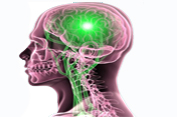Status Epilepticus in Adults: A 6-Year Retrospective Study
DOI:
https://doi.org/10.31661/gmj.v3i3.200Keywords:
Status Epilepticus, Adult, Prognosis, Glasgow Outcome ScaleAbstract
Background: Status epilepticus (SE) is one of the most common neurological emergencies with high mortality and morbidity. This study aims to determine the most common causes and outcomes of SE in adult patients from Fars Province in southern Iran.
Materials and Methods: 134 patients with SE (either convulsive or non-convulsive), admitted to Namazi Hospital, were enrolled from January 2006 to February 2012. We designed a questionnaire to collect the patients' demographics and disease characteristics and their outcomes according to Glasgow Outcome Scale (GOS). Statistical analyses were performed using SPSS software version 15. P-value<0.05 was considered statistically significant.
Results: Seventy patients were female and 64 were male with mean age of 42.97±19.66 years and 39.42±18.89 years old, respectively. Sixty-two patients (46.26%) had a history of epilepsy, and 72 patients (53.73%) had no history of epilepsy. Antiepileptic drugs (ADEs) withdrawal and cerebral infarction were the most common causes of SE in epileptics and non-epileptics, respectively. One hundred and twenty-three patients (91.8%) had generalized tonic-clonic SE. Thirty patients (22.4%) could return to work and 33 (24.6%) died during hospitalization. There was a significant relationship between mortality and age over 60 years (P<0.001), and mortality and cerebral infarction or anoxia (P= 0.022).
Conclusion: ADEs withdrawal in the epileptic patients was the main cause of SE (28.40% of the total population and 62% of the epileptic patients) that can be prevented by patient and family education. This study showed that high mortality and morbidity were significantly related to the increasing age and etiology of SE.
References
Logroscino G, Hesdorffer DC, Cascino G, Hauser WA. Status epilepticus without an underlying cause and risk of death: a population-based study. Arch Neurol. 2008; 65(2):221-4.
Nair PP, Kalita J, Misra UK. Status epilepticus: why, what, and how. J Postgrad Med. 2011;57(3):242-52.
Lowenstein DH, Alldredge BK. Status epilepticus. N Engl J Med. 1998;338(14):970-6.
Moayedi A, Atashabparvar A, Eftekhari E. Status epilepticus: etiology, outcome and predictors of mortality. Iran J Child Neurology. 2007;2(1):19-23.
Watson C. Status epilepticus. Clinical features, pathophysiology, and treatment. West J Med. 1991; 155(6):626-31.
Shah AM, Vashi A, Jagoda A. Review article: Convulsive and non-convulsive status epilepticus: an emergency medicine perspective. Emerg Med Australas. 2009;21(5):352-66.
Bleck TP. Less common etiologies of status epilepticus. Epilepsy Curr. 2010; 10(2):31-3.
Neligan A, Shorvon SD. Frequency and prognosis of convulsive status epilepticus of different causes: a systematic review. Arch Neurol. 2010; 67(8):931-40.
Asadi-Pooya AA, Poordast A. Etiologies and outcomes of status epilepticus in children. Epilepsy Behav. 2005;7(3):502-5.
Boggs JG. Mortality associated with status epilepticus. Epilepsy Curr. 2004;4(1):25-27.
Behrouz R, Chen S, Tatum WO 4th. Evaluation and management of status epilepticus in the neurological intensive care unit. J Am Osteopath Assoc. 2009;109(4):237-45.
Chin RF, Neville BG, Scott RC. A systematic review of the epidemiology of status epilepticus. Eur J Neurol. 2004;11(12):800-10.
Cooper AD, Britton JW, Rabinstein AA. Functional and cognitive outcome in prolonged refractory status epilepticus. Arch Neurol. 2009;66(12):1505-9.
Adibeik B. Status epilepticus: a review. Iran J Child Neurology. 2008;2(4):7-14.
Ashrafi MR. Status epilepticus. Iran J Pediat. 1999;10(3):204-17.
Akhondian J, Heydarian F, Jafari SA. Predictive factors of pediatric intractable seizures. Arch Iran Med. 2006;9(3):236-9.
Bradly WG, Daroff RB, Fenichel GM, Jankovic J. Neurology in clinical practice. 5th ed. Philadelphia PA: Elsevier; 2008.
Maganti R, Gerber P, Drees C, Chung S. Nonconvulsive status epilepticus. Epilepsy Behav. 2008;12(4):572-86.
Meierkord H, Holtkamp M. Non-convulsive status epilepticus in adults: clinical forms and treatment. Lancet Neurol. 2007;6(4):329-39.
Brophy GM, Bell R, Claassen J, Alldredge B, Bleck TP, Glauser T, et al. Guidelines for the evaluation and management of status epilepticus. Neurocrit Care. 2012; 17(1):3-23.
Starreveld E, Starreveld AA. Status epilepticus. Current concepts and management. Can Fam Physician 2000;46:1817-23.
Bassin S, Smith TL, Bleck TP. Clinical review: status epilepticus. Crit Care. 2002;6(2):137-42.
Chen JWY, Wasterlain CG. Status epilepticus: pathophysiology and management in adults. Lancet Neurol. 2006;5(3):246-56.
Marik PE, Varon J. The management of status epilepticus. Chest. 2004;126(2):582-91.
Meierkord H, Boon P, Engelsen B, Göcke K, Shorvon S, Tinuper P, et al. EFNS guideline on the management of status epilepticus in adults. Eur J Neurol. 2010; 17(3):348-55.
Tsai MH, Chuang YC, Chang HW, Chang WN, Lai SL, Huang CR, et al. Factors predictive of outcome in patients with de novo status epilepticus. QJM. 2009; 102(1):57-62.
Kang DC, Lee YM, Lee J, Kim HD, Coe C. Prognostic factors of status epilepticus in children. Yonsei Med J. 2005;46(1):27-33.
Tatum Iv WO, French JA, Benbadis SR, Kaplan PW. The etiology and diagnosis of status epilepticus. Epilepsy Behav. 2001;2(4):311-7.
Murthy JM. Refractory status epilepticus. Neurol India. 2006;54(4):354-8.
Towne AR. Epidemiology and outcomes of status epilepticus in the elderly. Int Rev Neurobiol. 2007;81:111-27.
Rossetti AO, Hurwitz S, Logroscino G, Bromfield EB. Prognosis of status epilepticus: role of aetiology, age, and consciousness impairment at presentation. J Neurol Neurosurg Psychiatry. 2006;77(5):611-5.
De Assis TM, Costa G, Bacellar A, Orsini M, Nascimento OJ. Status epilepticus in the elderly: epidemiology, clinical aspects and treatment. Neurol Int. 2012; 4(3):e17.
DeLorenzo RJ, Kirmani B, Deshpande LS, Jakkampudi V, Towne AR, Waterhouse E, et al. Comparisons of the mortality and clinical presentations of status epilepticus in private practice community and university hospital settings in Richmond, Virginia. Seizure. 2009;18(6):405-11.

Additional Files
Published
How to Cite
Issue
Section
License
Copyright (c) 2014 Galen Medical Journal

This work is licensed under a Creative Commons Attribution 4.0 International License.







